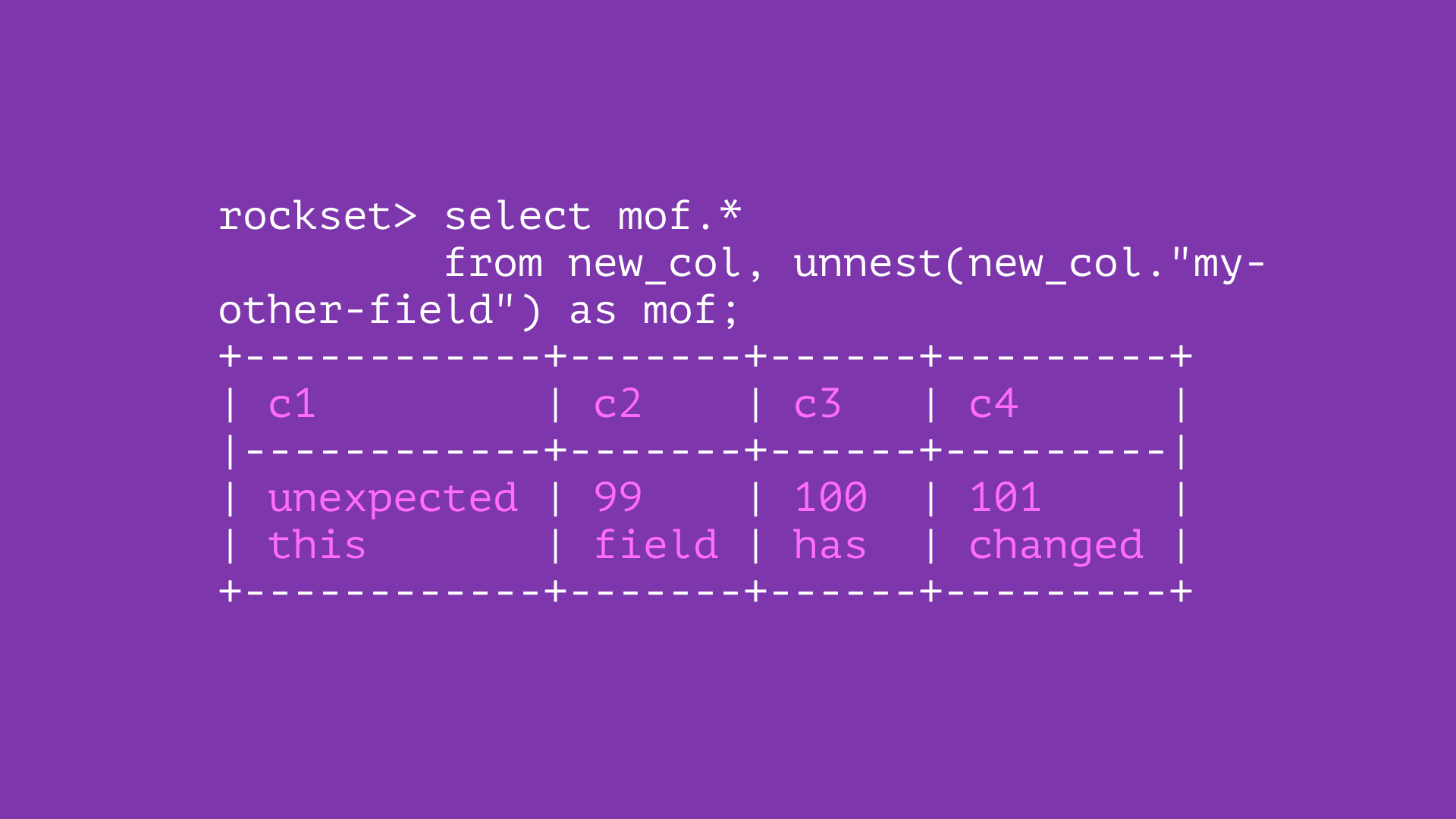

There are two ways to do this - using a DDL statement or through a wizard.
S3 json query how to#
Next, I wanted to learn how to create my own database and to reference my own data. I ended this part of my exploration by saving my query: I simply double-clicked on the table and field names to insert them into the query: If new log files arrived during my interactive session, they would automatically be included in subsequent queries (I’ll talk more about table definitions in a minute).Īs I was writing the queries I made use of the table description in the console.

The table definition points to an S3 bucket, and encompasses all of the objects in the bucket. The sample table contained Elastic Load Balancing log files so I analyzed the HTTP status codes:
S3 json query download#
It ran in less than a second and the results were displayed in the console, with the option to download them in CSV form: To get started, I entered a simple query and clicked on Run Query. My account was already configured with a sample database and, within the database, a sample table named elb_logs. The main screen shows the Athena Query Editor: I took Athena for a spin by opening it up in the AWS Management Console. Because Athena makes direct references to data stored in S3, you can take advantage of the scale, flexibility, data durability, and data protection options that it offers, including the use of AWS Identity and Access Management (IAM) policies to control access to data.
S3 json query driver#
You can also download and use the Athena JDBC driver and run queries from your favorite Business Intelligence tool.Įach Athena table can be comprised of one or more S3 objects each Athena database can contain one or more tables. You can run your queries from the AWS Management Console or from a SQL clients such as SQL Workbench, and you can use Amazon QuickSight to visualize your data. Athena is based on the Presto distributed SQL engine and can query data in many different formats including JSON, CSV, log files, text with custom delimiters, Apache Parquet, and Apache ORC. Your queries are expressed in standard ANSI SQL and can use JOINs, window functions, and other advanced features.

Behind the scenes, Athena parallelizes your query, spreads it out across hundreds or thousands of cores, and delivers results in seconds.Īthena includes an interactive query editor to help get you going as quickly as possible. You don’t have to build, manage, or tune a cluster or any other infrastructure, and you pay only for the queries that you run. You simply point Athena at some data stored in Amazon Simple Storage Service (Amazon S3), identify your fields, run your queries, and get results in seconds. Today I would like to tell you about Amazon Athena.Īthena is a new serverless query service that makes it easy to analyze large amounts of data stored in Amazon S3 using Standard SQL. Instead, they simply want to point-and-shoot: identify the data, run queries that are often ad hoc and exploratory in nature, get the results, and act on the results, all in a matter of minutes. They want to do this at high speed and they don’t want to spend a whole lot of time preprocessing, scanning, loading, or indexing data. These days, many people routinely process and query data in structured or semi-structured files at petabyte scale. s3.The amount of data that we all have to deal with grows every day (I still keep a floppy disk or two around in order to remind myself that 1.44 MB once seemed like a lot of storage). Where first argument is an object - parameters, and the second argument is a callback function. Instead of const response = getS3Objects(bucket,objectKey) you want to do getS3Objects(bucket,objectKey).then(response => console.log(response)) įurthermore, your usage of s3.getObject function is incorrect. The part above will still return a promise object, which means that you need to handle it accordingly.

I understand what you are trying to accomplish here but that is not the right way to do it.


 0 kommentar(er)
0 kommentar(er)
